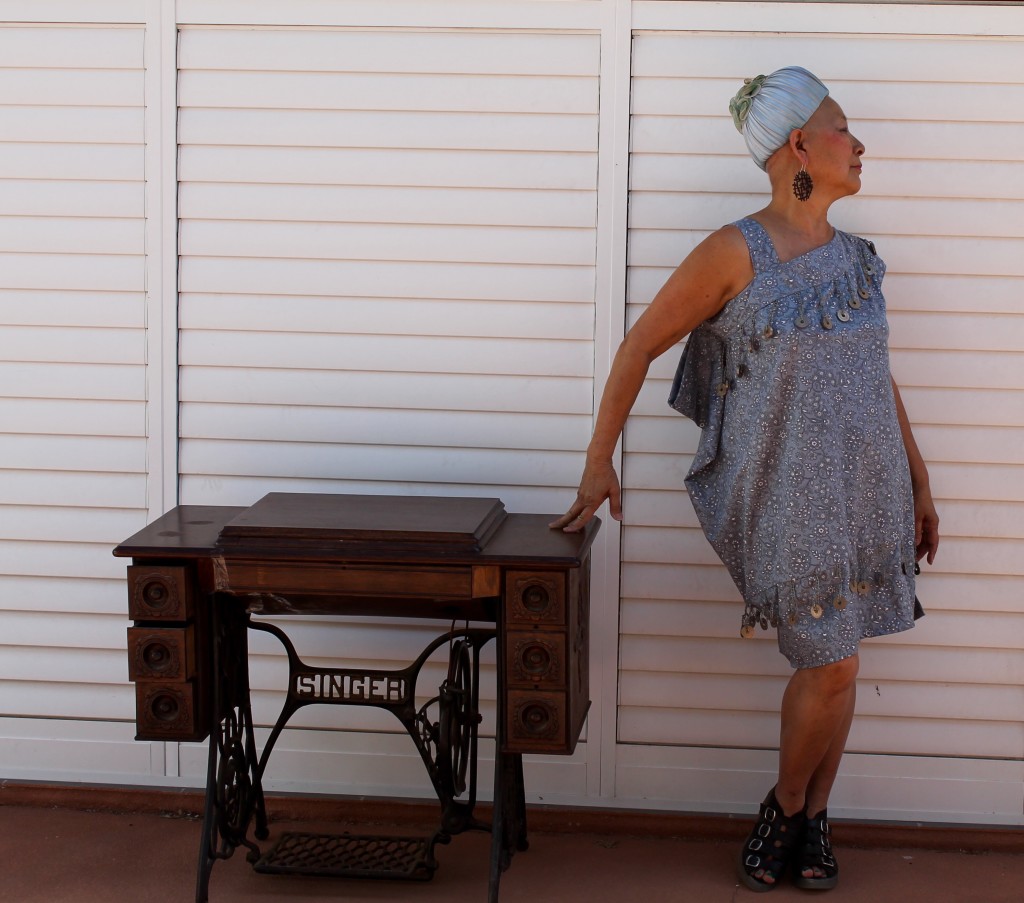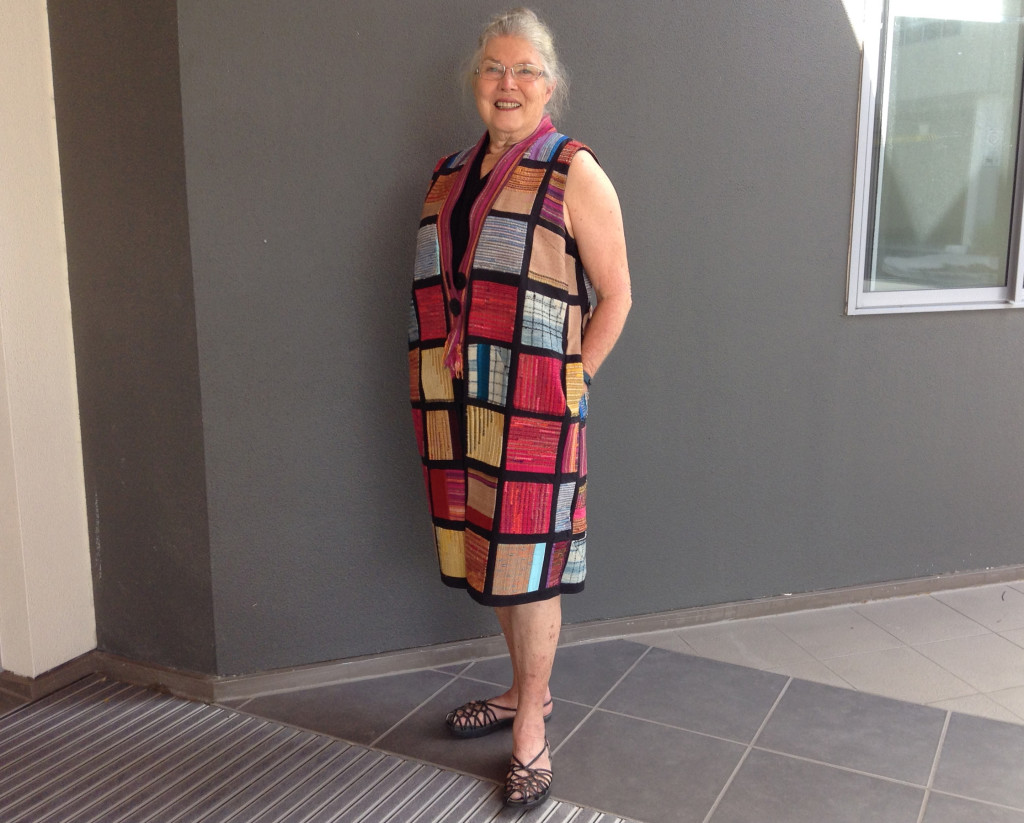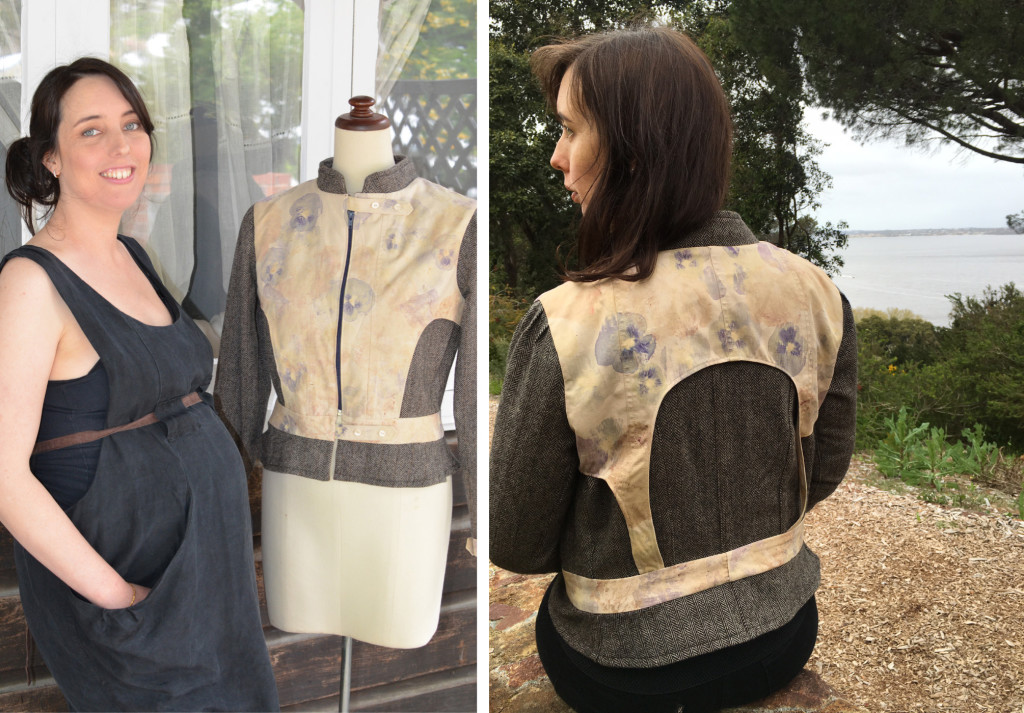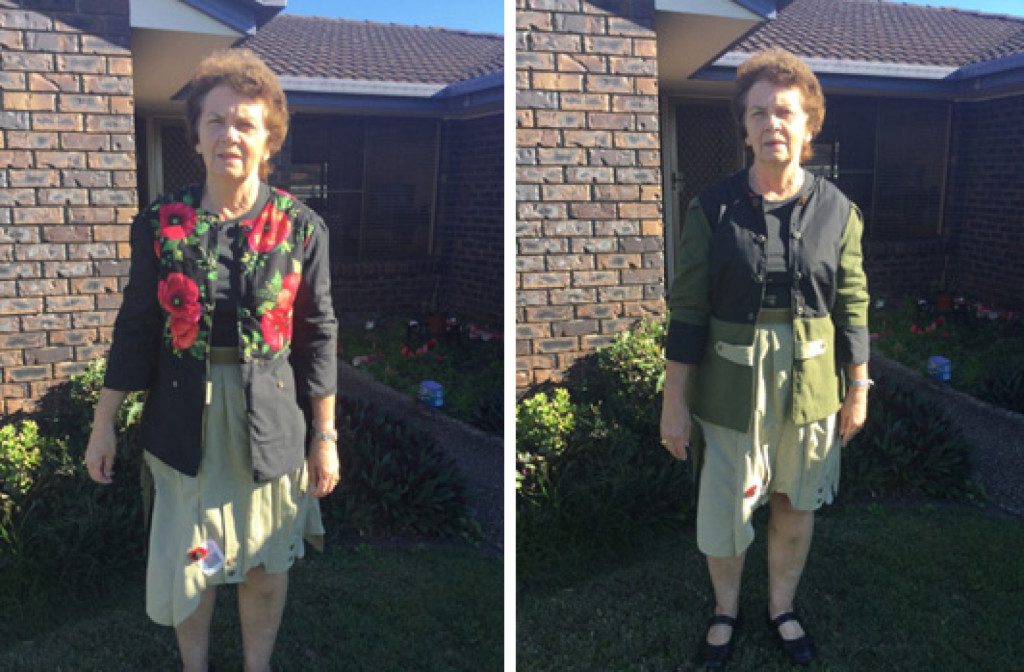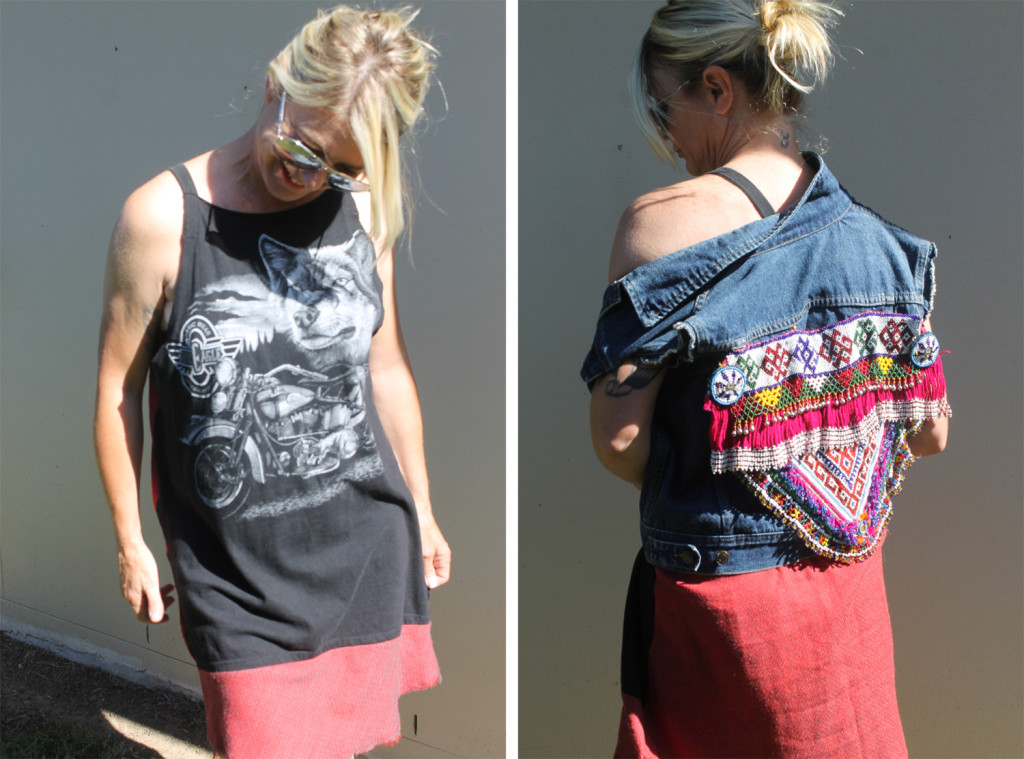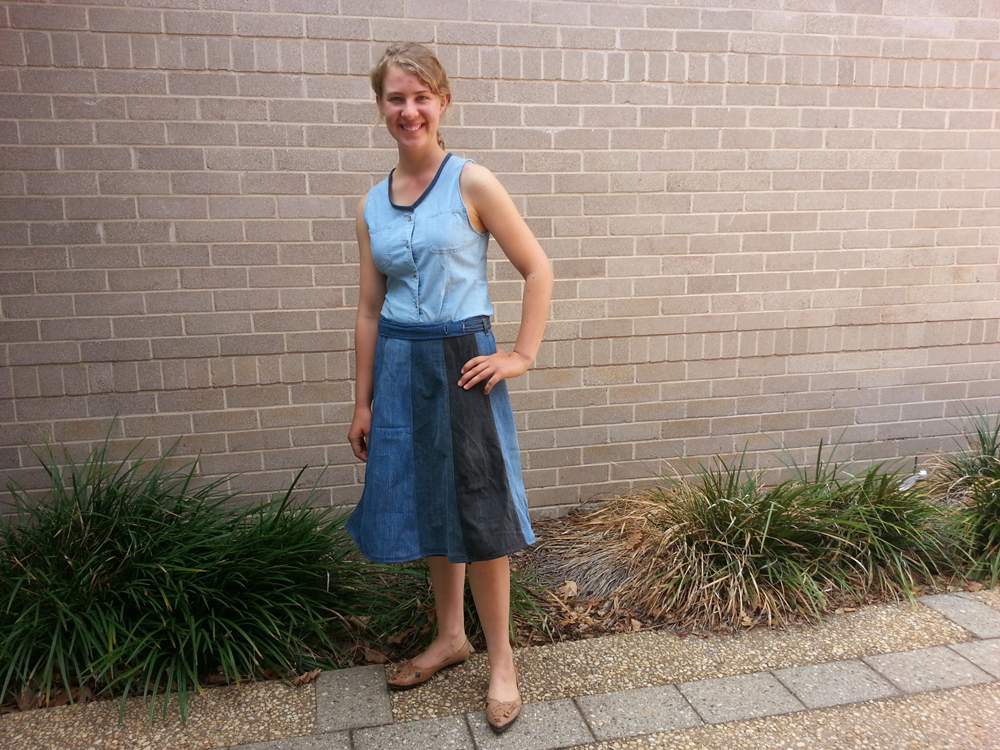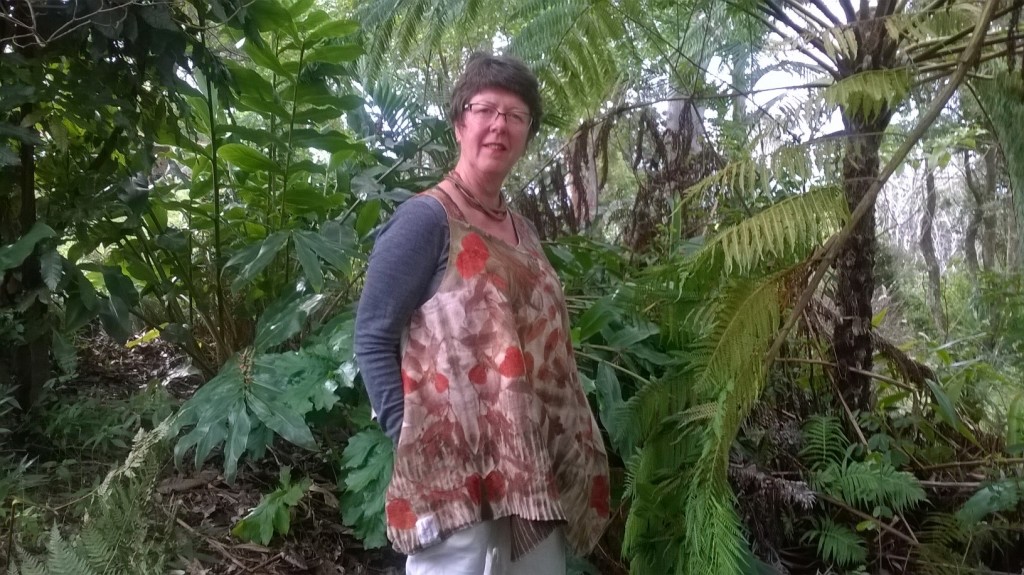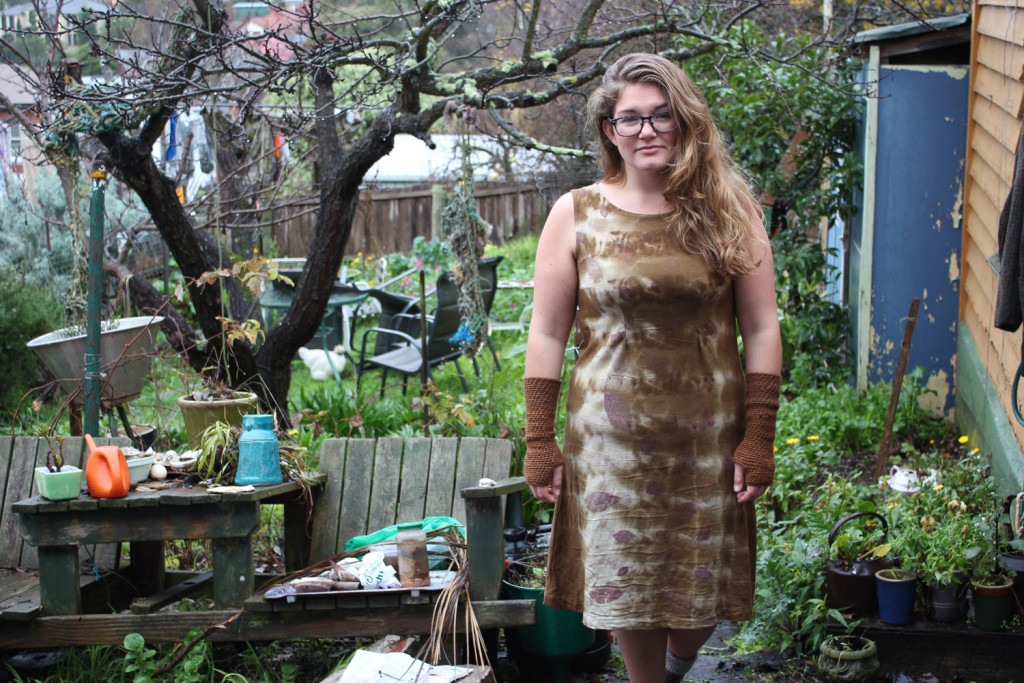Knowing the story behind the garment is a certainty when you’ve made it yourself, and when you’ve been creative and resourceful in the making then you are wearing something totally unique. Such was the case when a friend gave Vivienne Poon some 1936 Fiji pennies and she set about developing a design to incorporated them – in a bodice featuring two-coin tassels which chink when she walks, and a hemline with one-coin tassels that are not too weighty.
The numbers on textile waste
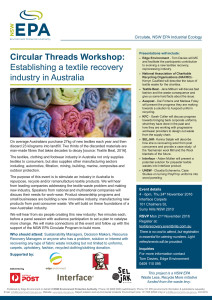 At the Circular Textiles Workshop in Sydney, Jane Milburn presented on the waste consequences of fast fashion.
At the Circular Textiles Workshop in Sydney, Jane Milburn presented on the waste consequences of fast fashion.
Watching the Rana Plaza factory collapse in Bangladesh unfolding on television in April 2013 opened my eyes to fast fashion, industrial supply chains and modern-day slavery. I’m a member of Fashion Revolution – a global movement in 80 countries working to increase transparency along the clothing supply chain. And I’ve set up Textile Beat as a vehicle to talk about slow clothing.
Journalist Lucy Siegle says 80 billion new garments are produced globally every year and fashion is the second-most polluting industry after oil. Clothing is so cheap it is almost disposable, discarded after only a few wears.
The United Nations reports at least 1/3 of food produced is never eaten – it is likely a similar amount of clothing is wasted too. There are ethical issues – impacting on people, places and the planet. Continue Reading →
Coat of many colours – Jenny Jackett
Slow clothing is a grassroots response to fast fashion that considers the ethics and sustainability of garments, values provenance and artisan skills while focusing on timeless style, comfort and connection.
Brisbane-based textile artisan Jenny Jackett is the latest maker to feature as part of The Slow Clothing Project and she knows all about slow making! Jenny spins natural fibres, dyes with natural dyes and hand-weaves her own and purchased yarns on a foot-powered loom to make unique handmade creations – such as this spectacular coat of many colours made from offcuts.
Making special pieces – Jemma Edwards
Having once been a part of the fashion scene, West Australian maker Jemma Edwards is uniquely placed to comment on contemporary clothing culture which she left behind a decade ago due to the influx of poorly made cheap alternatives.
Upcycled with love – Deborah Palmer
Deborah Palmer believed the 50th anniversary year of the Battle of Long Tan was an appropriate time to move along the regulation shirt and jacket her father Damien Gainer wore in Vietnam during service to Australia.
The serviceman’s uniform had been retained unworn through the intervening years and after Mr Gainer passed away two years ago, their only purpose was in holding memories of what had been.
Making feels good – Julie Livingstone
Although it may not be practical for everybody to go back to making everything for themselves and being completely self-sufficient, Western Australian Julie Livingstone believes it is good for our mental wellbeing to be able to create something.
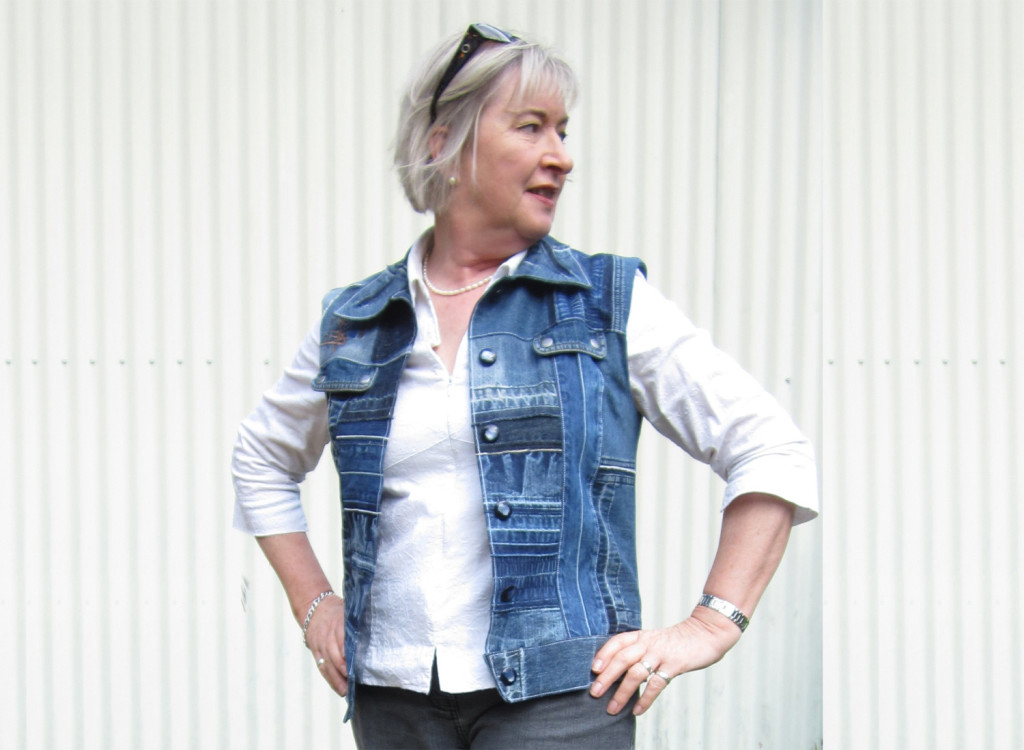
Julie Livingstone wears a vest she recreated from op-shop-found denim for The Slow Clothing Project.
This is part of what’s described (in Womankind Magazine #9) as ‘living directly’ or facing the world in its raw form, rather than through mediated experiences. Examples of living directly are cooking, sewing, chatting to others in person or patting the cat – whereas mediated living is experiences where someone else (film director, advertising executive or social media tools) is shaping the reality for you. Continue Reading →
Upcycling makes unique – Bron Berkin
Bron Berkin’s wardrobe is 100 percent restyled, secondhand clothing, upcycled, and vintage pieces. Her love of vintage fashion, stunning fabrics and workmanship of a bygone era – and her attraction to the unique – led Bron into upcycling and recycling preloved clothes as her work evolved from loving and selling original vintage to hand-making individual pieces using vintage fabrics and material that was retro quirky and different.
She now runs a small business designing, sewing and upcycling at Yeppoon in central Queensland. ‘It has been amazing to see people embracing what I was doing and enjoying the ‘one-off’ pieces!”
A panel beater – Eliza Kelly
Slow clothing is a different way of dressing and thinking about clothing than the way most of the world sees it, says New South Wales teenager Eliza Kelly. “It is exciting to think that I can dress in a way that uses old, or out-of-fashion clothing to make something new. I love the way that I can create something original, unique and different. Isn’t it awesome when someone says ‘what a nice …… where did you get it?’ and I can say that I made it! It makes me warm on the inside when I know that I have recycled something and given it another life,” Eliza said.
“The attitude of the world today seems to be that ‘new is better’, and ‘more, more, more’, but I think that there is so much beauty, uniqueness and stories to be told about recycled and re-modelling clothing. There is so much to be gained by recycling and re-using the materials that we have been given, and changing things with older fit, style or fashion to be useable today and tomorrow,” she said.
Stitch then bundle – Wendi Trulson
No one is too old or young to learn a new skill. That’s why south-east Queensland textile artist Wendi Trulson believes everyone can learn to create their own garments by just giving it a go.
Wendi’s passion is bundle (eco print) dyeing because of its sustainable and earth-friendly. It makes one think not only of the material waste but the chemical destruction that poisons the waterways of the world.
Hand mind creativity – Sarah Lundgren
Sarah Lundgren believes creativity is important for wellbeing and good health – and is stimulated by the work of the hands and mind.
She learned the basics of sewing from primary and secondary school, having textile as a subject. Sarah’s grateful now that when growing up, her parents empowered her to mend and hem her own clothes. Reusing and recycling clothes was part of her upbringing, yet in recent years she has become more interested in learning how to make outfits and therefore her sewing skills have improved over time.
Continue Reading →
